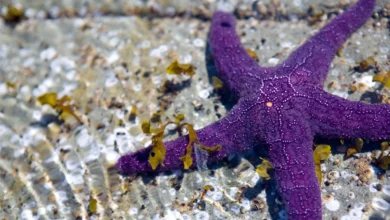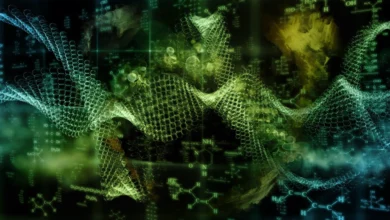Latest Articles
-
Dec- 2023 -17 DecemberEvolution

Mysterious Anatomy Unraveled – Stanford Scientists Uncover Location of Starfish’s Head
Lead Image: A Stanford study using genetic and molecular tools has unraveled the mystery of starfish anatomy, revealing that their “head” is distributed across multiple regions, including the center and each limb. This finding challenges traditional understanding and suggests a complex evolutionary history. The research, exploring the transformation from bilateral to pentaradial body plans, emphasizes the importance of studying diverse life forms to gain insights into evolutionary biology. If you put a hat on a starfish, where would you put it? On the center of the starfish? Or on the point of an arm and, if so, which one? The…
Read More » -
13 DecemberBrain

Decoding Humanity: How Mapping the Mouse Brain Unveils Human Secrets
Researchers have mapped over 2.3 million brain cells from mice, shedding light on how different brain cell types are formed through gene regulation. This work, part of a larger effort to create a detailed brain cell atlas, has significant implications for understanding brain function and treating neuropsychiatric disorders. UC San Diego researchers are translating the language of brain cells, and it’s helping them figure out what goes wrong in diseases of the brain. Despite all our cells sharing the same DNA, there are thousands of different cell types in the human brain, each with a unique structure and function. One…
Read More » -
Nov- 2023 -28 NovemberCOVID-19

HomeHealth News Spike in Child Mental Health Emergencies During Second Year of COVID Pandemic
Lead Image: A Harvard Medical School study found a sharp increase in U.S. youth visiting emergency departments for mental health crises during COVID-19’s second year. The study highlights the urgent need for improved mental health resources and policies, especially as adolescent girls face a higher risk of severe mental health issues like self-harm and suicide attempts. A surge in girls’ visits drove the trend, fueling longer waits for inpatient care. During the second year of the COVID-19 pandemic, there was a significant rise in the number of young Americans seeking emergency hospital care for mental health crises. This was revealed…
Read More » -
28 NovemberBiotechnology

Brain Imaging Redefined: NexGen 7T MRI Achieves 10x Better Resolution
Lead Image: The NexGen 7T MRI scanner marks a breakthrough in brain imaging, providing unprecedented resolution that could transform neuroscience research and the diagnosis of brain disorders. Funded by the BRAIN Initiative, this technology enables detailed imaging of brain circuitry and could lead to significant advancements in understanding mental and neurological disorders. Higher resolution will allow neuroscientists to more precisely localize and trace brain networks. An intense international effort to improve the resolution of magnetic resonance imaging (MRI) for studying the human brain has culminated in an ultra-high resolution 7 Tesla scanner that records up to 10 times more detail…
Read More » -
26 NovemberBiochemistry

Revolution in Organic Synthesis: Scientists Revive Century-Old Technique
Lead Image: Chemists have resurrected the Barbier method using mechanochemistry, replacing hazardous solvents with a solvent-free approach. This advancement promises safer and more sustainable manufacturing, particularly in pharmaceuticals. Organic synthesis is the art of creating molecules, where chemists craft molecules essential for pharmaceuticals, agrochemicals, and high-tech gadget materials, including those in smartphones. Think of it as playing with LEGO at a microscopic level – chemists connect simple building blocks to create complex molecules, just like snapping together LEGO bricks to make intricate structures. One crucial step in this puzzle is creating a bond between two carbon atoms. Like LEGO bricks…
Read More »










